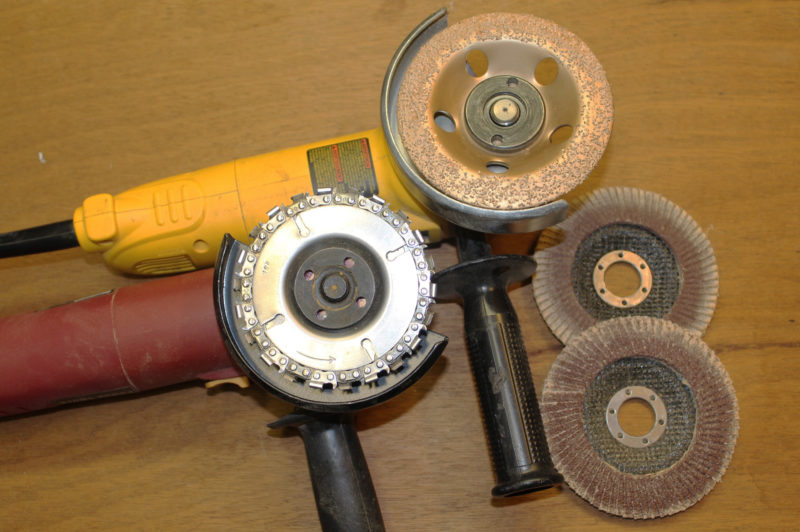 photographs and video by the author
photographs and video by the authorAngle grinders are designed for working metal; equipped with sanders and blades designed for wood, they have plenty of power to do quick work.
Some of the woodworking tasks we take on in boatbuilding have a lot in common with sculpture, as we carve our way from a block to a purposeful shape. When I started making spoon-bladed oars I used gouges, curved spokeshaves, and my father’s Stanley 100-1/2, a small spoon bottom plane. I later turned to a Makita 125mm disc sander as a quicker way to work concave shapes. It spun at a screaming 4,500 rpm and used stiff resin-fiber discs that cut aggressively. It could shape the power face of a spoon blade when the edge of the disc was set at an appropriate angle to the wood. It made for quick work, albeit dusty and noisy, but the discs didn’t last long and tended to scorch the wood when their grit dulled.
While I was looking through tool catalogs, I found woodworking discs made for angle grinders. I had a few projects on my to-do list that might be made easier by putting my grinder to work, so I bought a carving disc, a 24-grit carbide cup wheel, and 60-grit and 120-grit flap discs.
The carving disc is a 22-tooth loop of chainsaw chain that is clamped between two pressed-steel discs. The angle grinder spins it at 11,000 rpm—three times as fast as my tablesaw—which is scary enough when turning a toothless, , metal-cutting disc, but more so when spinning chainsaw teeth into an invisible blur.
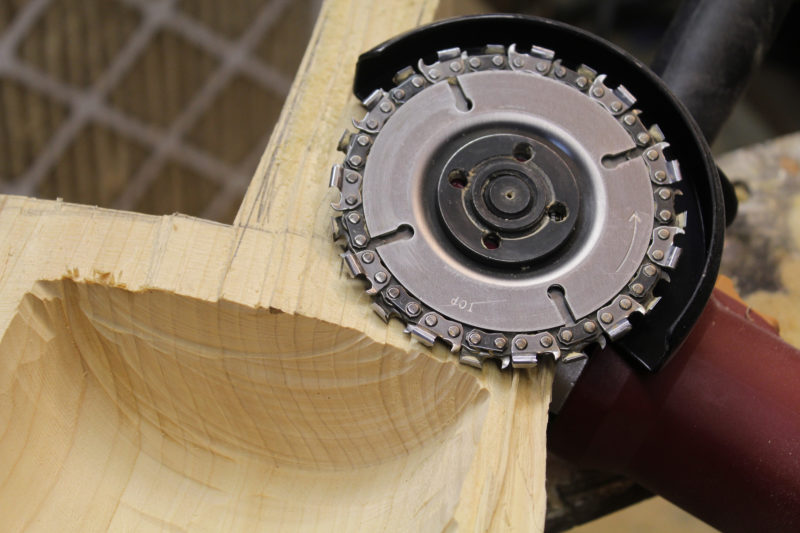
The Carving Disc made quick work of cutting the hollow of a traditional wooden bailer.
The carving disc removes and throws wood particles that are heavier and that travel faster and farther than wood dust. A full-face shield and a protective glove for the hand holding the grinder are useful accompaniments to the standard safety gear of safety glasses, hearing protection, and dust mask. The carving disc is very much like the round tip of a chainsaw, and if you’ve ever gotten sloppy with a chainsaw, you know that the blade will buck up toward your head if you inadvertently catch the tip on something. The carving disc didn’t exhibit that tendency in the work I’ve done with it; it cut so fast that the wood would go flying before the teeth could get enough of a hold on it to send the tool flying. The chain is held only by pressure between the two steel discs, so it could slip if it hits something unyielding. That’s the manufacturer’s caveat; I decided against putting it to the test.
The carving disc can make plunge cuts and kerfs up to 1″ deep and, with repeated passes, is able to dig deeper and wider hollows. Using the grinder with it requires a firm grip and a steady hand because mistakes happen quickly. The disc worked well for the initial rough-shaping of a Viking-style bailer, but it cuts so quickly and coarsely that finish work requires a tool with a slower cut and finer control. [Update, April 2021: I just watched a video describing some serious accidents that happened using a chainsaw disc. I took the advice offered and put my disc in the trash. Using it isn’t worth the risk. CC]
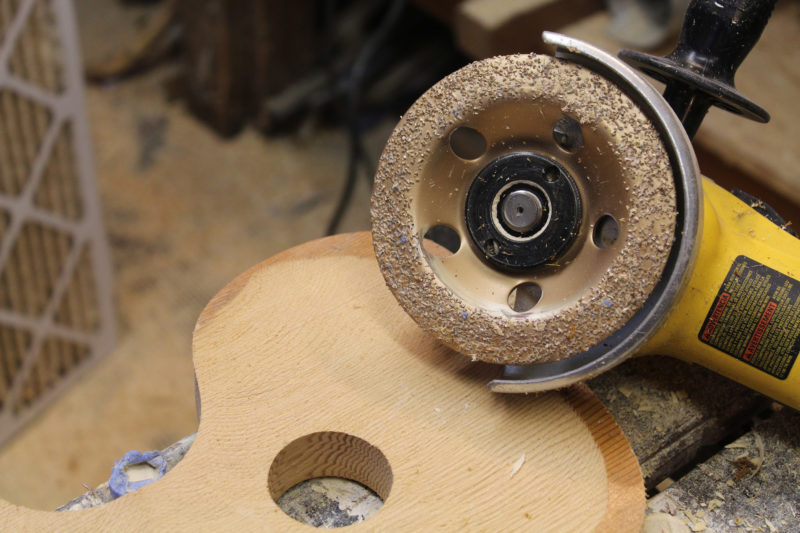
Cutting the shallow contours of a rowing seat was a task well suited to the Carbide Cup Wheel.
The carbide cup wheel is made of steel with coarse carbide grit fused to its perimeter. Only a couple of grades of the abrasive element are available; mine has #24 carbide. For an abrasive tool it cuts quickly, and the carbide will outlast any sandpaper. The edge of the wheel doesn’t have grit in it, so it won’t cut, making it safer to use than the carving disc. For making gentle concave cuts for oar blades and rowing seats, it’s an ideal tool for shaping. It’s faster than my Makita disc sander, and it won’t wear out. The carbide cup wheel comes in handy for other jobs that require quick removal of wood; I could rough-in the bevels on a piece of white oak to use for a stem, saving my elbow grease for planing the last bit smooth and up to the lines.
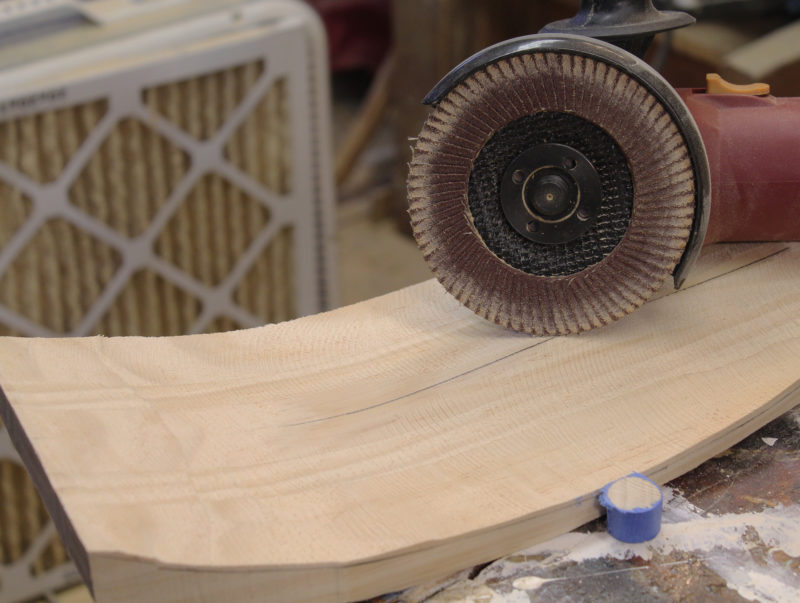
After using the Carbide Cup Wheel to do the initial shaping of spoon blade, I used the flap sanders to do the more subtle work of refining the shape.
The flap sanders for angle grinders are designed for finishing metal but work just as well on wood. The perimeter has over 70 overlapping 5/8″ x 7/8″ resin-coated fabric flaps glued to a fiberglass disc. The flaps are set at a slight angle to the plane of the disc so they get better contact with the work. The 120-grit flap sander is the finest I have (some sources offer 180) and while it leaves a smooth surface, it still cuts so quickly that changes in the pressure applied results in uneven work. To finish up, I put the grinder away and use a random-orbit sander and hand-sanding to finish the job.
If you don’t have an angle grinder, there are some inexpensive options for under $20. You may find they open up some possibilities for working with both metal and wood. Just be sure to handle them carefully and use good protection for your eyes, lungs, and ears.![]()
Christopher Cunningham is the editor of Small Boats Monthly.
You can share your tricks of the trade with other Small Boats Monthly readers by sending us an email.

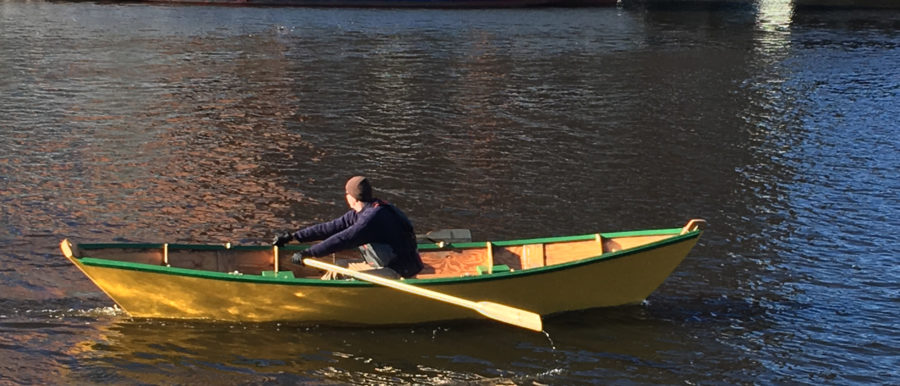


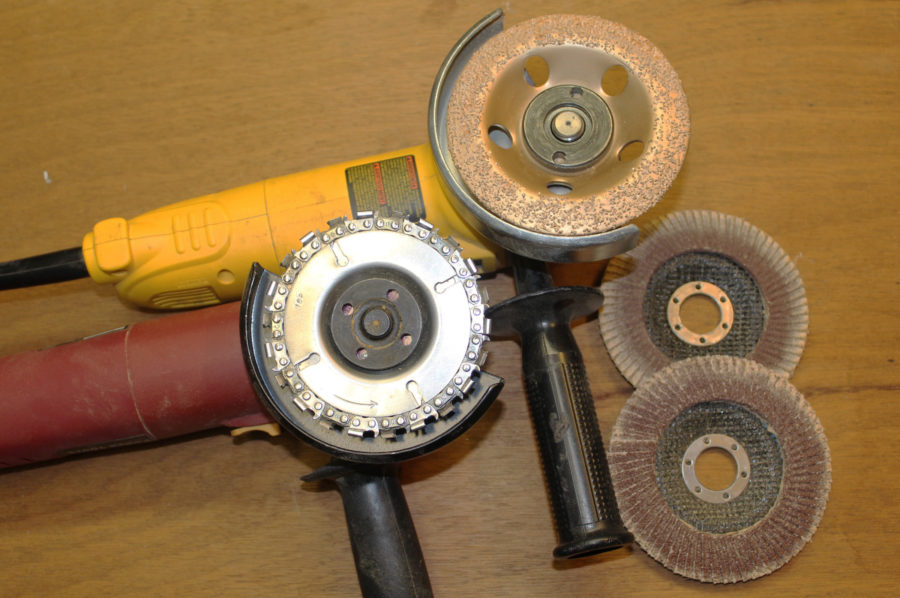

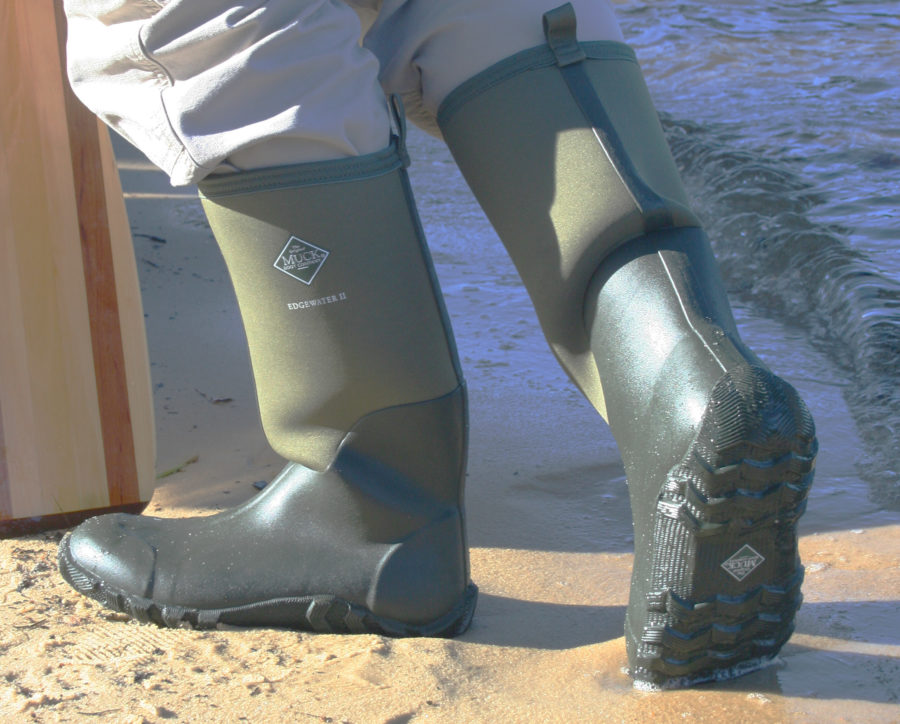
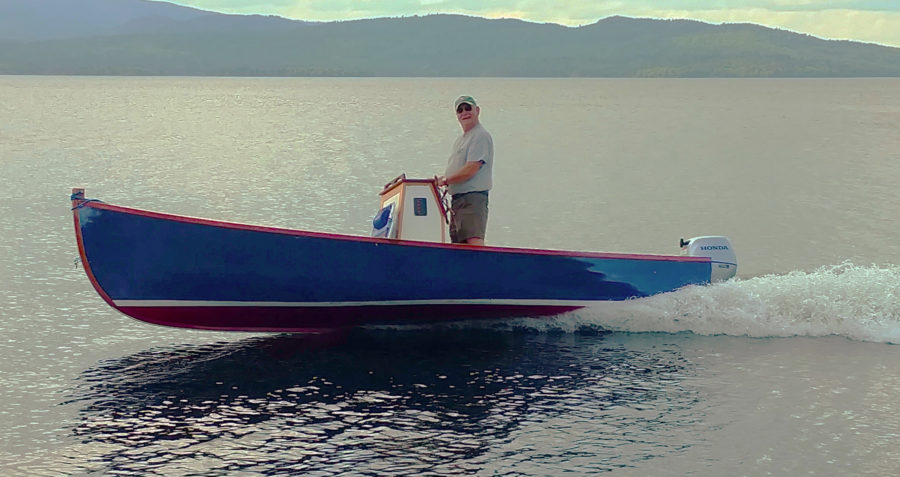
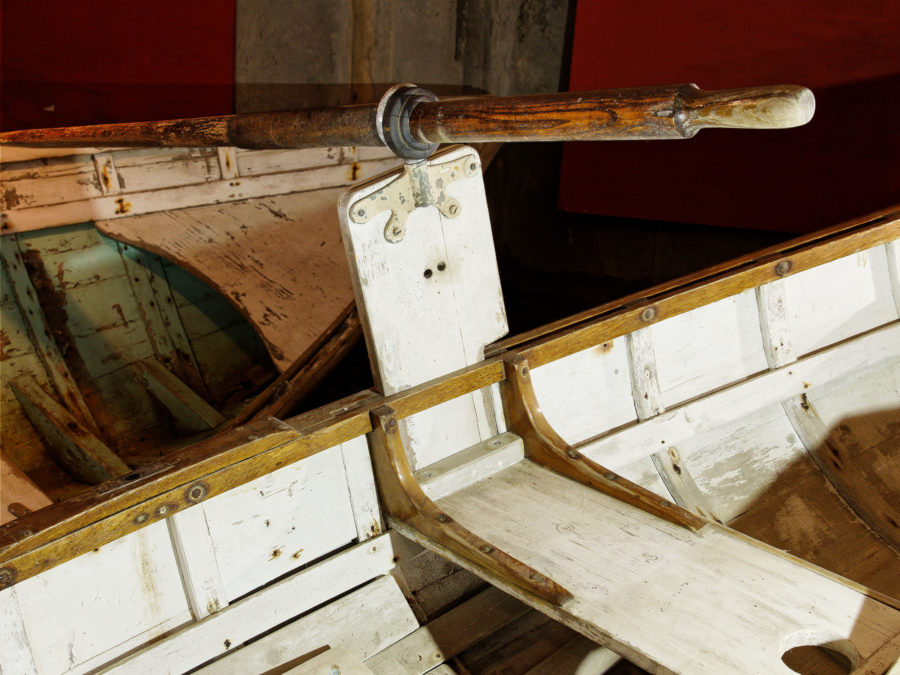
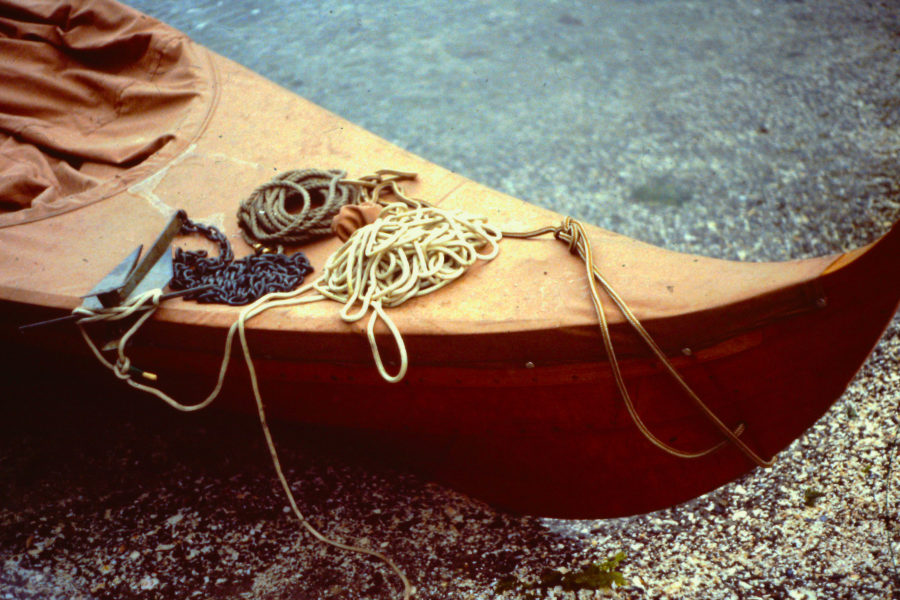
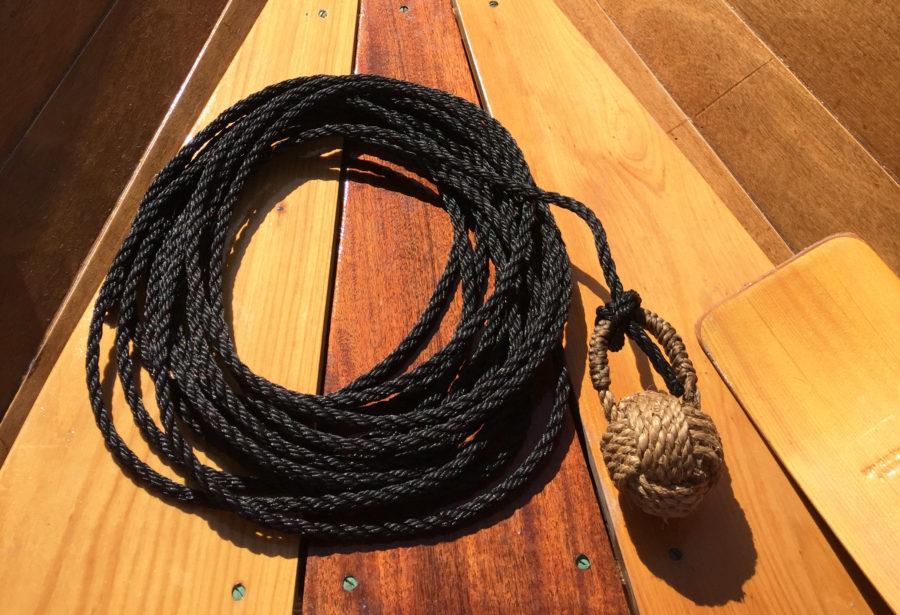
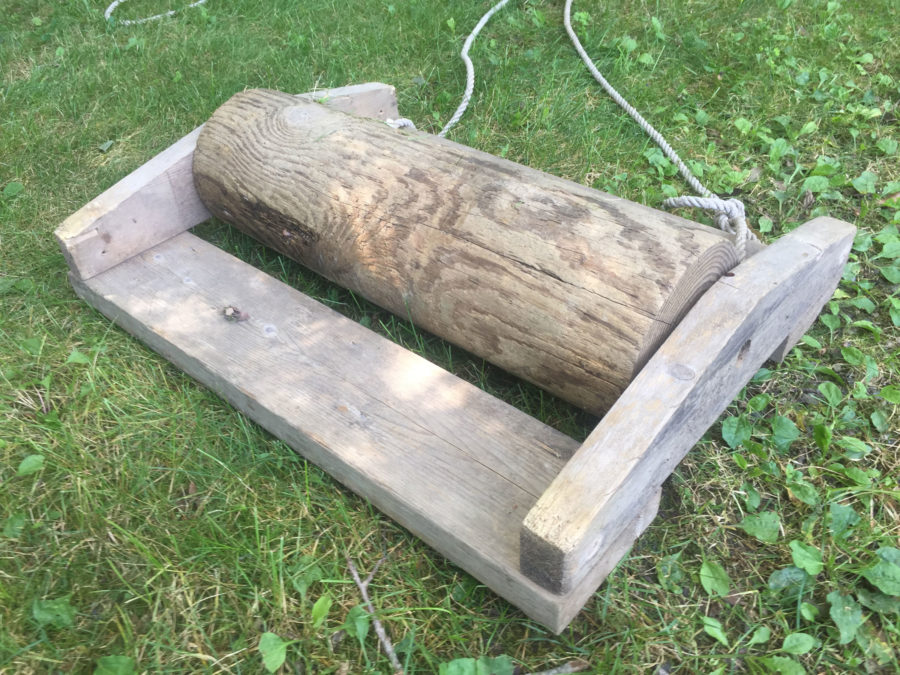
I’ve used the cup disk to shape chair seats. It works great, just be aware – they cut REALLY fast! But if you do mess up and have to make a second piece, you’ll still be saving time.
Christopher, thanks for including the videos. They are so much more informative than just words to describe the potential advantages of angle grinders for wood work. It is almost like getting a tactile feedback on using one. I have wondered how controllable and fast they might be. The videos were a big help in getting me up to speed.
Having used both a paint grinder and an angle grinder in the making of paddles I much prefer the somewhat slower removal of stock of the paint grinder. Any mistakes happen slower and are easier to correct. That said, the flap discs on an angle grinder are a wonderful way of working straight sections quickly.
If you’re willing to spend $149 the Arbotech Turboplane is the best wood-shaping angle-grinder blade I have ever used. It is powerful, accurate, forgiving and durable.
I am am an unplugged woodcarver and have recently gotten into power carving due my boss at the custom furniture shop I work at. I bought the Harbor Freight 22-tooth cutting disk and was surprised as the amount of kickback. My boss told me to use 2 disks at once for increased safety. I took the advice and it made all the difference between a potential trip to the ER and a pleasant, albeit dusty and dirty experience. I alternate the teeth so I now have 44 teeth cutting and one is actively engaged in the wood as all times. The result is a smoother but aggressive cut with reduced kickback and less chance of it running away from your intended cut. I can now hog away, cut, hollow, shave, and level with confidence with a tool that less expensive than a Lancelot.